One of my favorite things about exploring a new place is getting to know the plants that grow there and how the local folks use them (if they do). I love to see what’s growing wild and what people are cultivating. Each place has its own lovely array of diverse flora.
Currently, Ayla & I are visiting Olón — a small beach town on the Ecuadorian coast. Its tropical climate allows a variety of interesting plants to thrive here.
I’ve been really enjoying identifying & learning about them. Detailed below is a bit about a few of my favorite edible and medicinal plants you’ll find in Olón.
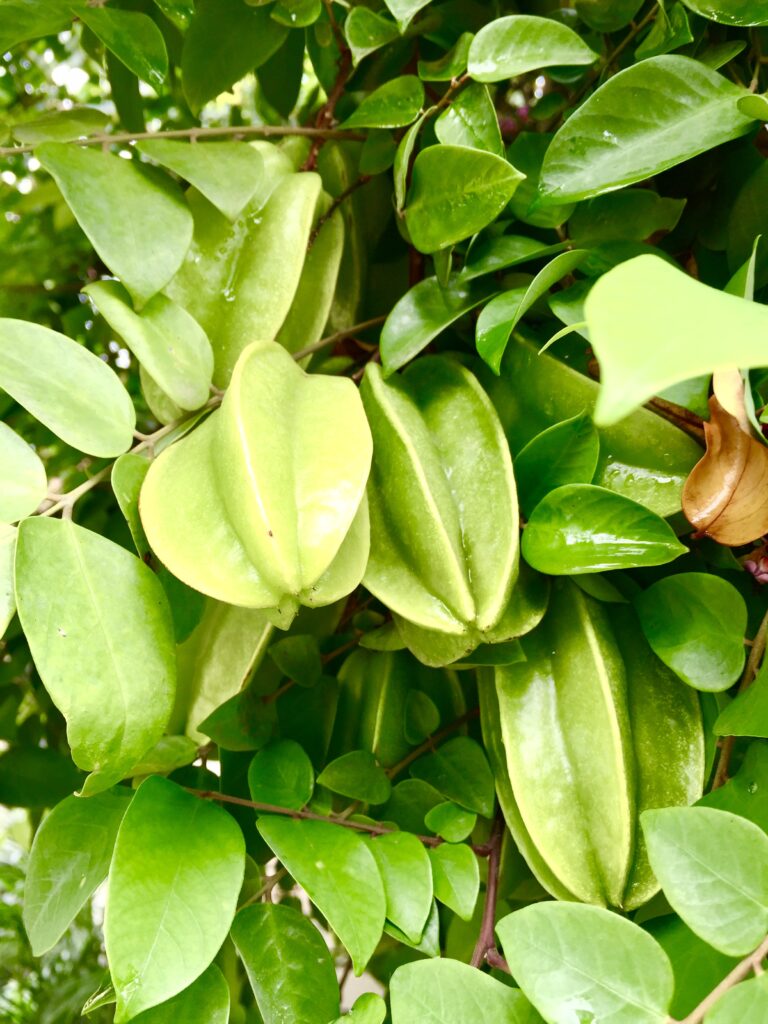
Averrhoa carambola — Starfruit
Star fruit, also commonly known as carambola, is a small tree that is native to Southeast Asia. It is cultivated in semi-tropical & tropical areas for its delicious edible fruits.
Star fruit is rich in important nutrients, including fiber, vitamins B5 & C, calcium, sodium, folate, copper, potassium, and magnesium.
The rich vitamin C content of star fruit boosts the immune system. It is also a good source of electrolytes, like sodium, potassium and calcium —which promotes heart health, blood pressure maintenance, and can reduce the risk of heart attack or stroke.
Star fruit can be helpful for soothing sore throat, reducing mucus, and treating respiratory infections.
It can also boost digestion and help to ease digestive issues like constipation, bloating, cramping, and diarrhea (“Star Fruit”).
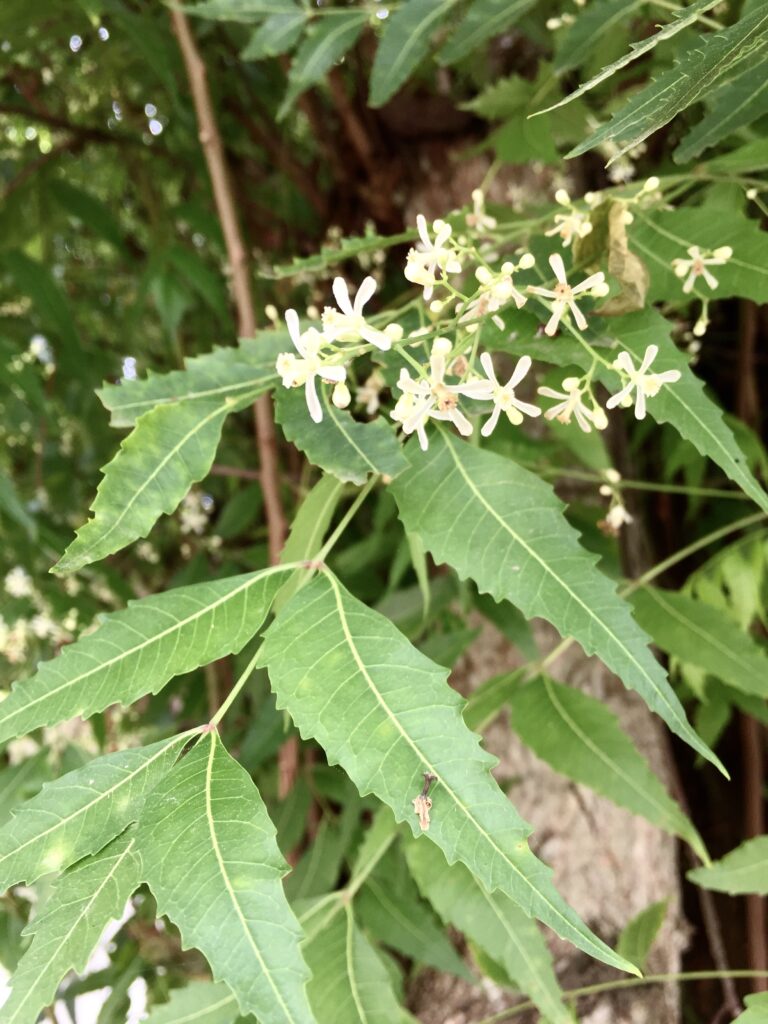
Azadirachta indica — Neem
Neem is a tree in the Meliaceae family that is native to India and Africa. It is grown in semi-tropical and tropical regions. Neem oil is extracted from its seeds. The leaves and bark are also useful.
Neem is a valued medicinal in Ayurveda. The oil has anti-inflammatory, anti-fungal, antiviral, and antibacterial actions. It has been used to treat & prevent ringworm, scabies, and head lice. Neem oil is also utilized to heal skin issues, like eczema and psoriasis.
A decoction of the bitter & astringent bark is used to treat hemorrhoids. An infusion of the leaves is taken for malaria, peptic ulcers, and intestinal worms. A juice, infusion, or salve of the leaves is applied topically to heal wounds, boils, and eczema. A tincture can treat fever. The twigs are used to clean teeth.
Neem is currently being studied as a potential contraceptive for both men and women (Chevallier 70).

Bougainvillea spectabilis — Bougainvillea
Bougainvillea is a woody perennial vine with purple, magenta, pink or orange flowers. It has long been used as a medicinal plant in traditional cultures. It has antiviral, antibacterial, and anti-fungal properties. It’s also an antioxidant and anti-inflammatory herb.
The leaf and bark have been shown to treat diabetes. An alcohol extract of the leaves helps prevent and treat ulcers.
Bougainvillea also protects the liver from damage and prevents blood clots. The leaf has been shown to lower cholesterol.
This plant has also has promising potential as a contraceptive. A study using the leaves of Bougainvillea found that in males, it decreased the overall amount of sperm, as well as impairing their motility, and viability. In females, the estrous cycle was disrupted. It also decreases the sex hormones testosterone and estrogen (Ghogar).
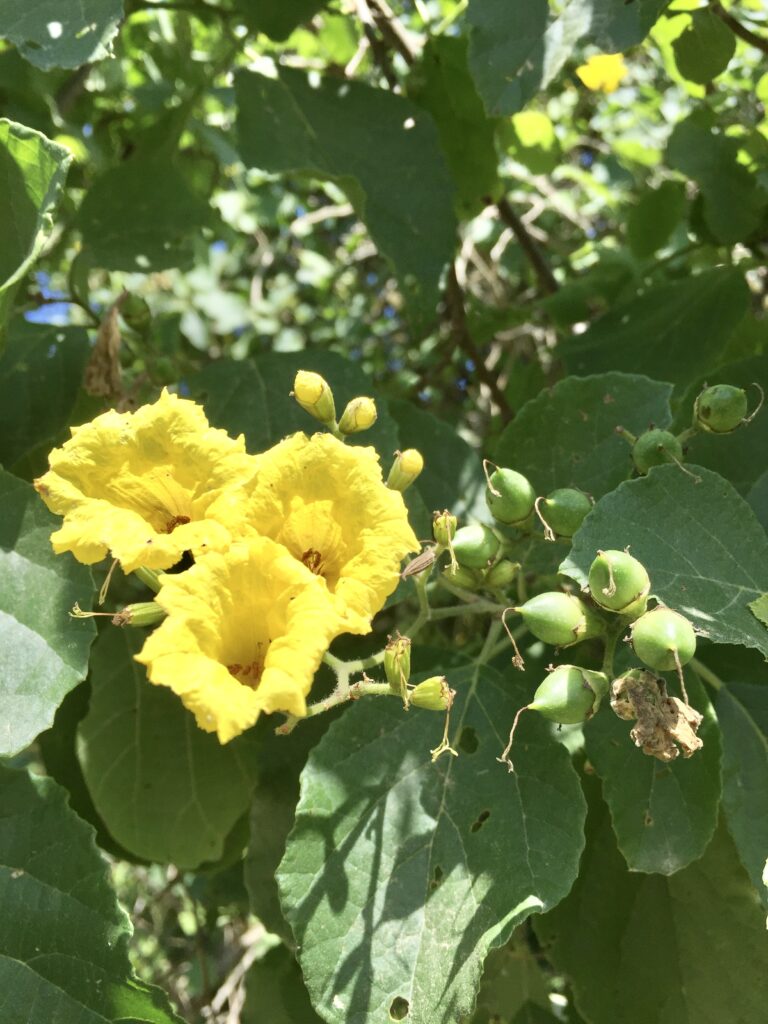
Cordia lutea — Muyuyo
Muyuyo is a small, shrubby tree native to the Galápagos Islands, mainland Ecuador, and Peru. It is in the Boraginaceae (Borage) family. It has showy yellow flowers and produces small white fruits with sticky pulp. In Peru the herb is known as “overo.”
Cordia lutea flowers contain polyphenols — health boosting compounds found in certain plants — and antioxidants — which protect our cells from environmental damage (Ramirez).
Muyuyo has long been utilized in traditional Peruvian medicine for treating liver problems and prostate inflammation. A 2020 study found that an alcohol extract of Cordia lutea flowers has chemopreventive effects— reducing the risk or delaying the development or recurrence of prostate cancer (Rojas-Armas, et al.).

Delonix regia — Flamboyán, Flamboyant Tree
Flamboyán is a flowering tree in the Fabaceae family. It is native to Madagascar and is endangered in its natural habitat. But, it is widely cultivated in other parts of the world and has naturalized in many of the places where it is grown.
In addition to being a beautiful ornamental, Flamboyán also has a wide array of medicinal uses. It is anti-inflammatory and antioxidant. It has been used to relieve and prevent arthritic symptoms. It helps to heal wounds. It is protective and healing to the liver. It also has anti-carcinogenic potential.
Flamboyán has antifungal and antibacterial properties. It has been used to treat infestations of parasitic worms. It is larvicidal, meaning that it is an insecticide that kills insects in their larval stage.
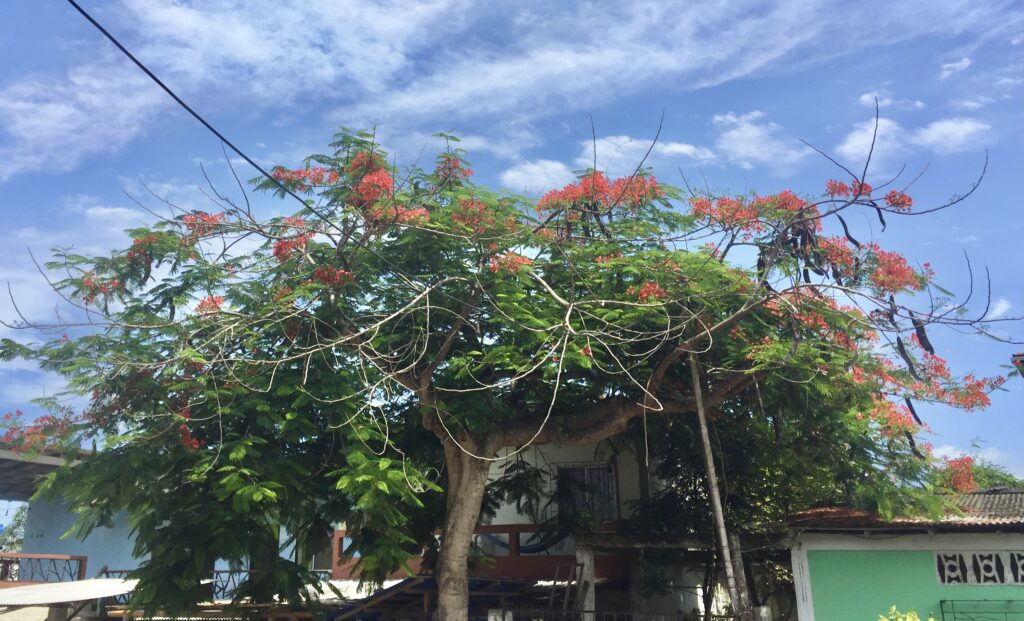
It reduces nausea, vomiting, and diarrhea. It has also been used to treat malaria (Sharma).
An extract made from the leaves is cardioprotective, preventing and healing heart damage. It also has the potential improve overall heart, liver and kidney functions (Wang).
An alcohol extract of the leaves has also been shown to lower blood glucose levels and thus, has potential to be used to treat diabetes (Rahman).
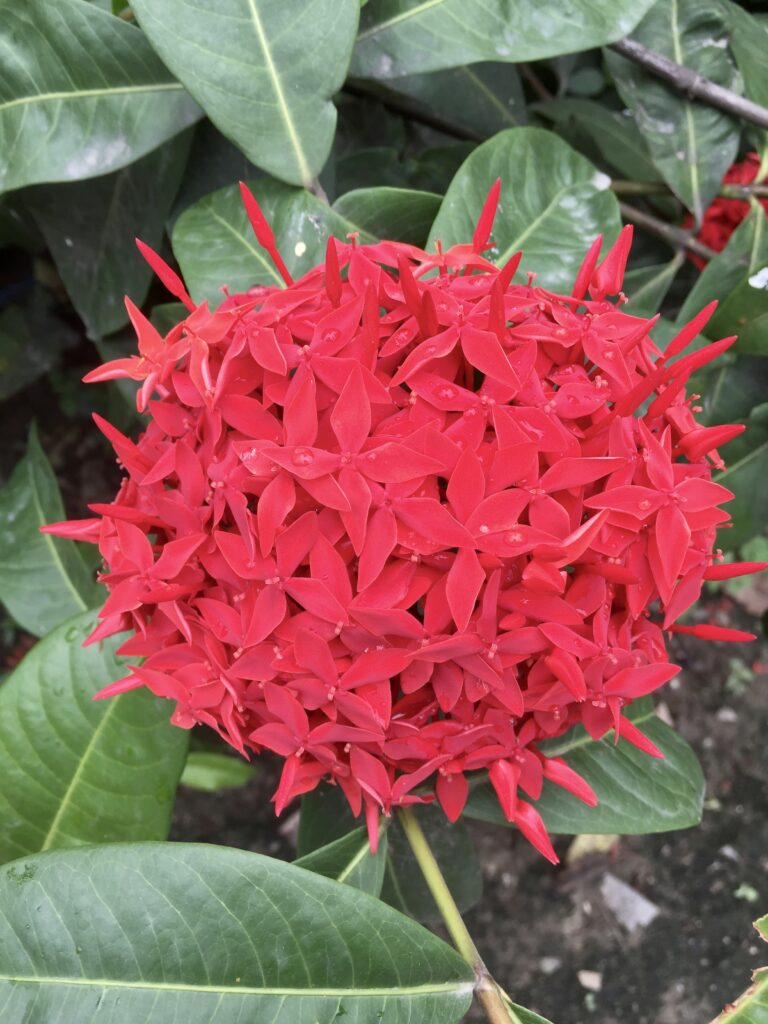
Ixora coccinea — Jungle Geranium
Jungle geranium or geranio de la jungla is flowering shrub in the Rubiaceae family that is a popular ornamental plant in warm climates.
The flowers, leaves, roots, and stem of jungle geranium are utilized in Indian folk medicine to treat various health issues. The fruits are eaten, when fully ripe (Baliga). Traditional medicine has used jungle geranium to treat hypertension, menstrual irregularities, sprains, chronic ulcers, and various skin diseases (Upadhyay et al.).
Ixora coccinea is an important source of polyphenols. It also has antibacterial properties (Baliga). A study of jungle geranium leaf alcohol extract found that it is has potent antimicrobial action against most common pathogens that infect wounds. It also accelerates wound healing by stimulating fibroblast growth factor — which boosts the repair & regeneration of tissues — and by promoting collagen production in wounded skin (Upadhyay et al.).
It is protective to the digestive tract and liver. It can be used to treat diarrhea (Baliga).
Jungle Geranium is an antinociceptive, meaning it decreases pain without affecting consciousness (Baliga).
It has been used to treat cancer and has may delay the development or recurrence of cancer (Baliga).
Ixora coccinea also possesses anti-mutagenic properties (Baliga). To explain what that means, I’ll quote a study that appeared in the Journal of Applied Genetics in 2014, “Mutagenicity refers to the induction of permanent changes in the DNA sequence of an organism, which may result in a heritable change in the characteristics of living systems. Antimutagenic agents are able to counteract the effects of mutagens” (Słoczyńska, et al.).

Momordica Charantia — Bitter melon
Bitter melon is a climbing vine in the Cucurbitaceae family that is native to Southern Asia and is now common in many tropical areas of the world.
Ripe bitter melon fruit is a stomach tonic and has been used to treat ulcers. It also induces menstruation. The unripe fruit is used treat type 2 diabetes.
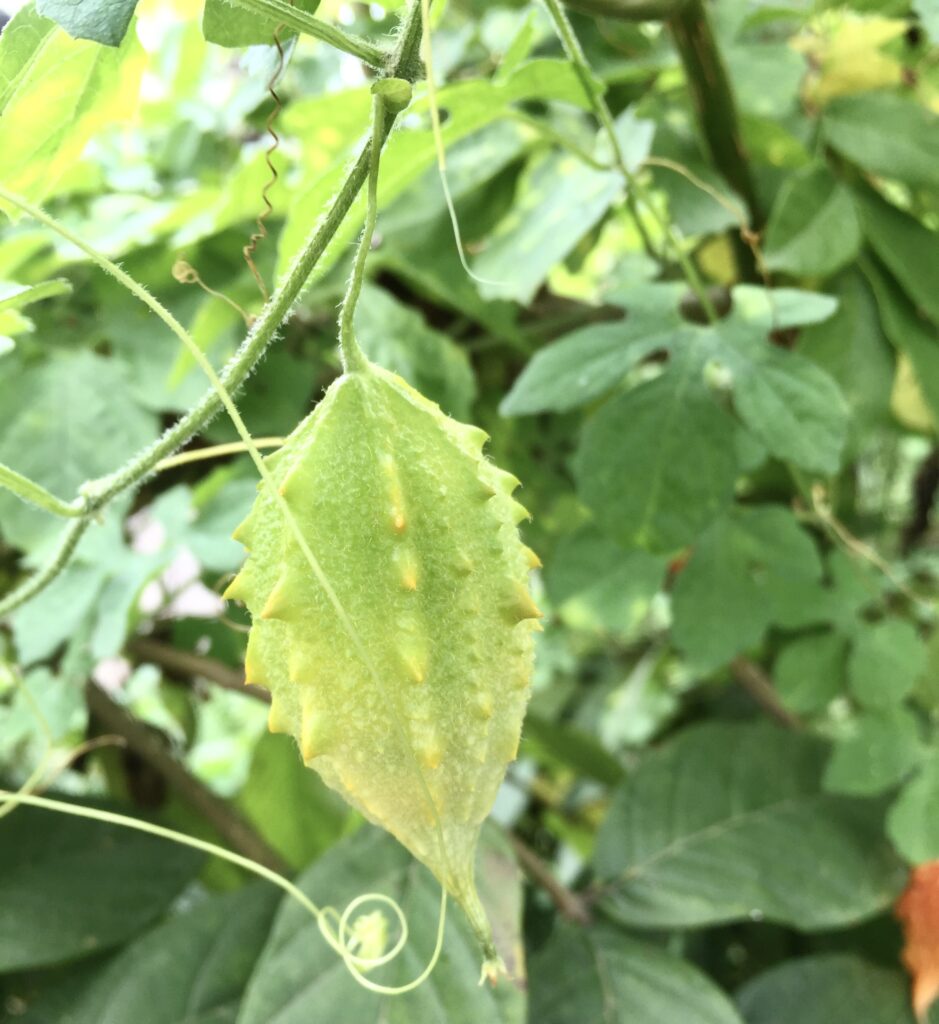
In the West Indies, the fruit is widely utilized as a remedy for worms, urinary stones, and fever.
The juice of the fruit is used as a purgative, and for colic & gas. A decoction of the leaves is drunk for liver issues & colitis or applied topically for skin conditions. The oil of the seed is used to heal wounds.
Bitter melon is not advised for those who are prone to low blood sugar. It is relatively safe at low doses, but using it for longer than 4 weeks is not advised (Chevallier 235).

Morinda citrifolia — Noni
Noni is a shrub or small tree that is native to the South Pacific. It is a general tonic, and promotes immune system health, in particular.
Noni is antibacterial, antimicrobial, and antiparasitic. It has antioxidant and blood purifying properties. It also helps to promote healthy menstruation.
The leaf and the juice of the leaf have been used to treat inflammation, fevers, sore throat, and chronic respiratory infections, including influenza, asthma, colds, & sinusitis.
It has been utilized for digestive problems, including indigestion, diarrhea, constipation, gastric ulcers and intestinal parasites.
It is helpful for treating skin issues, such as burns, wounds, cuts, abscesses, boils, acne, and thrush. It has also been used for gingivitis.
Noni should be avoided if pregnant or breastfeeding (Tierra 170-172).

Plumeria rubra — Plumeria
Plumeria, also sometimes called Frangipani, is a small tree with potently fragrant pink or white flowers that is cultivated in many tropical areas of the world.
Despite the fact that the USDA Forestry Service lists Plumeria rubra as a poisonous plant and states that “all parts of the plumeria are considered toxic,” many cultures have utilized Plumeria to treat a variety of ailments.
Traditional medicine has used plumeria to treat toothaches & tooth decay and as an abortifacient and purgative (Bania).
Modern research has shown that plumeria contains a great deal of medicinal constituents, including those that lend anti-inflammatory, antiviral, anti-fungal, antimicrobial, and antioxidant properties (Bania). Studies have found that the alcohol extract of Plumeria rubra had significant activity against various strains of bacteria (Manisha).
Plumeria has been shown to treat infestations of parasitic worms. An extract of Plumeria rubra leaves was found to have significant anthelmintic effects (Manisha).
The flower extract has been shown to have the potential to prevent and treat anxiety (Manisha).
Plumeria is protective to the liver. A 2013 study found that an alcoholic extract of Plumeria rubra pods had significant hepatoprotective effects (Dabhadkar et al.)
It is a uterine stimulator (Bania). Plumeria also has anti-fertility properties — decreasing the rate of fetal implantation and also increasing the rate of embryonic loss (Manisha).
It is an analgesic and an antispasmodic. It has been shown to be anti-tumor. It also lowers blood sugar levels (Bania) and cholesterol (Manisha).
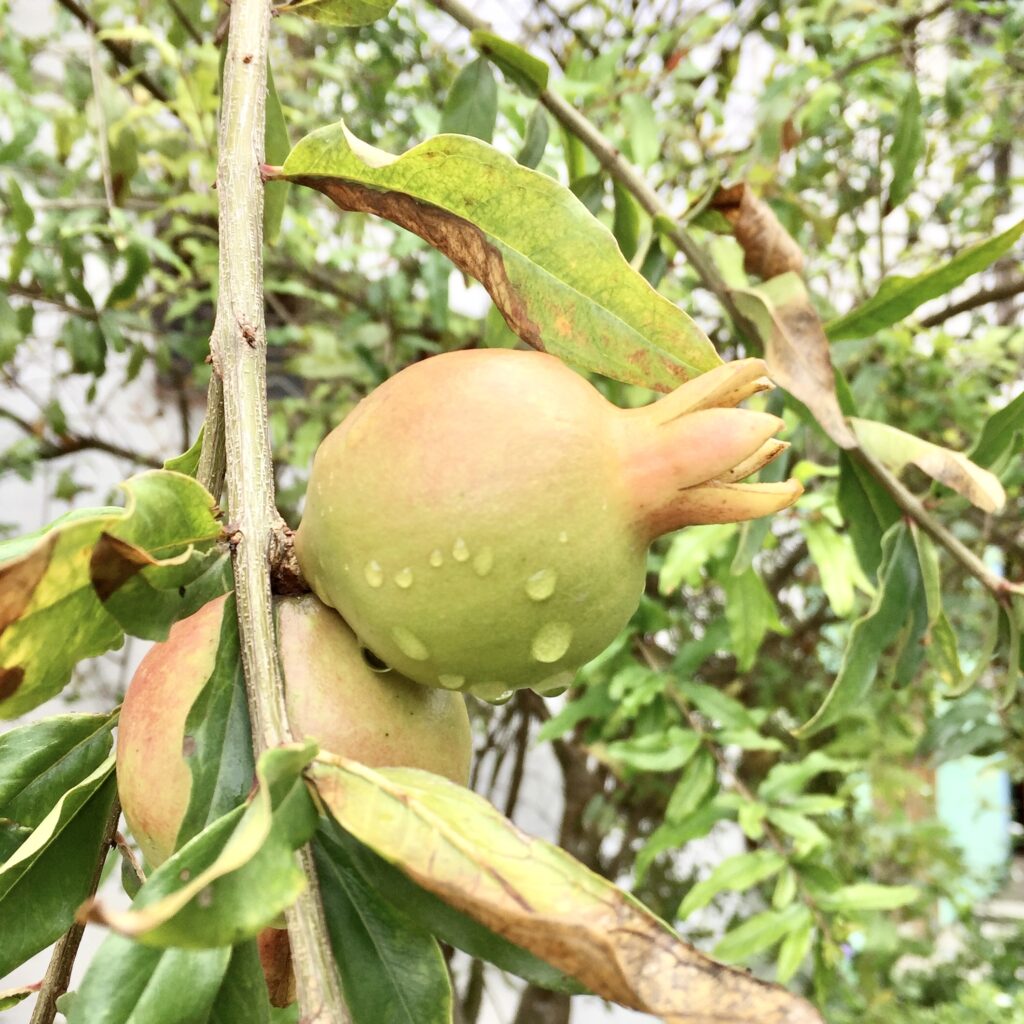
Punica granatum — Pomegranate
Native to southwest Asia, pomegranate trees are widely cultivated for their delicious & health-boosting fruit.
Pomegranate fruit is rich in antioxidants that can help to reduce inflammation, remove free radicals, and protect cells from damage. It is rich in vitamins C & E, and a good source of folate, potassium, and vitamin K.
The fruit improves blood flow and keeps arteries healthy. It also helps to lower blood pressure. It is soothing to the digestive tract, boots digestion, and helps to ease gas & flatulence (Ferreira).
The rind and the bark of this plant have medicinal benefits, as well, but due to high levels of toxic pelletierene alkaloids, it is wise to only utilize the medicine of these plant parts under the supervision of a professional. That said, the strongly astringent rind and bark of the pomegranate are considered a specific remedy for tapeworm infestation (Chevallier 258).
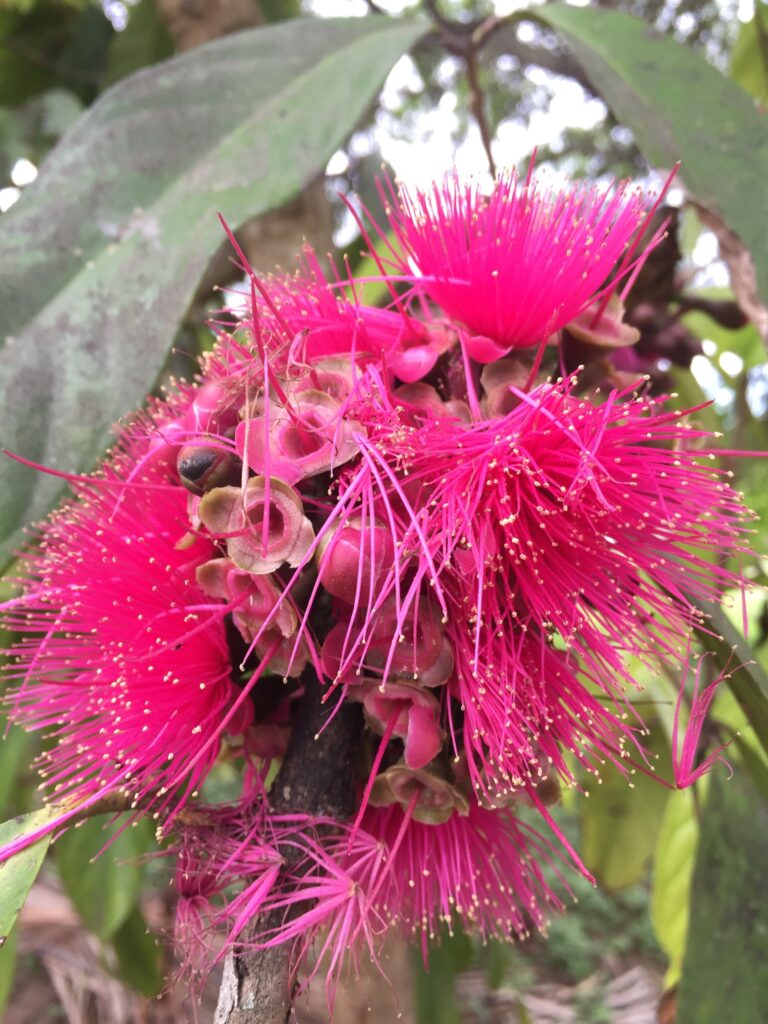
Syzygium malaccense — Malay rose apple
Malay rose apple, also known as Mountain Apple or Red Jambo, is a tropical tree that that thrives in humid climates. It is said to be the most beautiful species in the genus Syzygium. Indeed, its stunning pink flowers and red or pink fruits are quite lovely.
Malay rose apple fruits are edible and are enjoyed raw, pickled, or made into desserts. The seeds, bark, fruit, and leaves have all been used in traditional medicine.
Folk medicine utilizes a decoction of Syzygium malaccense to reduce a fever (Hock). It is utilized in Polynesian traditional medicine to treat infectious diseases. Modern research shows that it has antiviral, antifungal and antibacterial properties. Extracts of seeds, fruits, bark, stem and leaves show antibiotic activity. (Savitha).
The root is used as a diuretic, to reduce edema, and to relieve itching. The juice of the leaves is applied to the skin and added to baths. The leaves of this plant are also used for many different inflammatory conditions (Savitha).
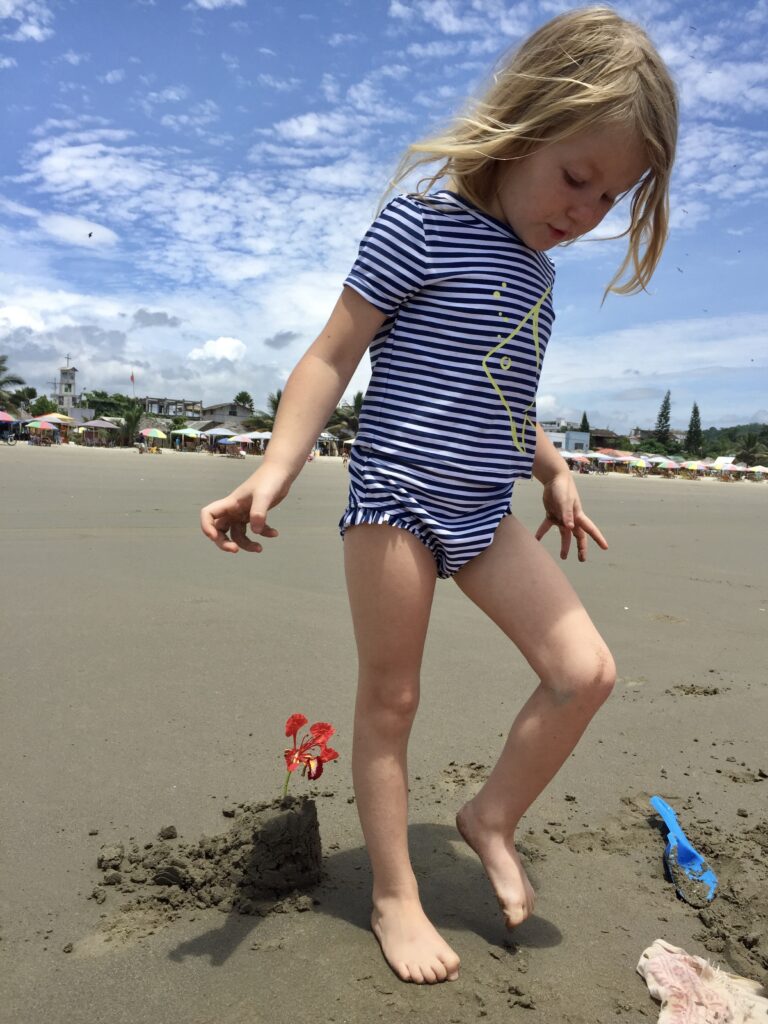
References
Baliga, Manjeshwar Shrinath, and Poruthukaran John Kurian. “Ixora coccinea Linn.: traditional uses, phytochemistry and pharmacology.” Chinese journal of integrative medicine vol. 18,1 (2012): 72-9.
Bania, Nawal. “Medicinal uses of Plumeria rubra.” Uttaranchal (P.G.) College Of Bio-Medical Sciences & Hospital. July 32, 2020.
Chevallier, Andrew. Encyclopedia of Herbal Medicine. Dorling Kindersley. 2000.
Dabhadkar D, et al. Effect of Alcoholic Pod Extract of Plumeria rubra on Biochemical and Haematological Parameters of Female Albino Rats, Int. J. Pharm. Sci. Rev. 2013; 15:69-74.
Ferreira, Mandy. “Fifteen health benefits of pomegranate juice.” Medical News Today. January 21, 2019.
Ghogar, Anisa and Wannee Jiraungkoorskul. Antifertility Effect of Bougainvillea spectabilis or Paper Flower. Pharmacogn Rev. 2017 Jan-Jun; 11(21): 19–22.
Ghogar, Anisa, et al. Paper Flower, Bougainvillea spectabilis: Update Properties of Traditional Medicinal Plant. November 2016. Journal of Natural Remedies. 16(3):82.
Hock Eng Khoo, et al., “Phytochemicals and Medicinal Properties of Indigenous Tropical Fruits with Potential for Commercial Development”, Evidence-Based Complementary and Alternative Medicine, vol. 2016, Article ID 7591951, 20 pages, 2016.
Manisha, Kalantri and Aher AN. “Review on traditional medicinal plant: Plumeria rubra.” Journal of Medicinal Plants Studies 2016; 4(6): 204-207.
“Poisonous Plants — Plumeria rubra.” USDA Forestry Service.
Rahman et al. “Effect of Delonix Regia Leaf Extract on Glucose Tolerance in Glucose-Induced Hyperglycemic Mice.” Afr J Tradit Complement Altern Med. (2011) 8(1):34-36.
Ramirez, Casio, et al. “Actividad antioxidante y contenido de polifenoles en flor de Cordia lutea Lam (flor de overo).” Universidad Católica los Ángeles de Chimbote. 2018.
Rojas-Armas, Juan Pedro, et al. “Cordia lutea L. Flowers: A Promising Medicinal Plant as Chemopreventive in Induced Prostate Carcinogenesis in Rats.” Evidence-Based Complementary and Alternative Medicine, vol. 2020, Article ID 5062942, 8 pages, 2020.
Sánchez, Mayorga, et al. Plantas medicinales utilizadas por la población de la ciudad de León. Universitas (León): Revista Científica De La UNAN León. 2007. 1 (1), 24–26.
Savitha, Rabeque, et al. “Invitro Antioxidant Activities on Leaf Extracts of Syzygium Malaccense (L.) Merr and Perry.” Anc Sci Life. 2011 Apr-Jun; 30(4): 110–113.
Sharma, Saloni and Saroj Arora. Photochemicals and Pharmecutical Potential of Delonix Regia. Int J Pharm Pharm Sci, 2015. Vol 7, Issue 8, 17-29.
Słoczyńska, Karolina, et al.“Antimutagenic compounds and their possible mechanisms of action.” J Appl Genet. 2014; 55(2): 273–285. Published online 2014 Mar 11.
“Star Fruit.” Nourish by WebMD. WebMD Medical Reference. Reviewed by Poonam Sachsen on June 22, 2021.
Tierra, Michael. The Way of Herbs. Pocket Books. 1998.
Upadhyay, Aadesh, et al. “Ixora coccinea Enhances Cutaneous Wound Healing by Upregulating the Expression of Collagen and Basic Fibroblast Growth Factor”, International Scholarly Research Notices, vol. 2014, Article ID 751824, 9 pages, 2014.
Wang, Lung-Shuo, et al. Delonix regia Leaf Extract (DRLE): A Potential Therapeutic Agent for Cardioprotection. PLoS ONE 2016. 11(12).
Yun, Ye-Rang Yun, et al. “Fibroblast Growth Factors: Biology, Function, and Application for Tissue Regeneration.” J Tissue Eng. 2010; 2010: 218142. Published online 2010 Nov 7.

